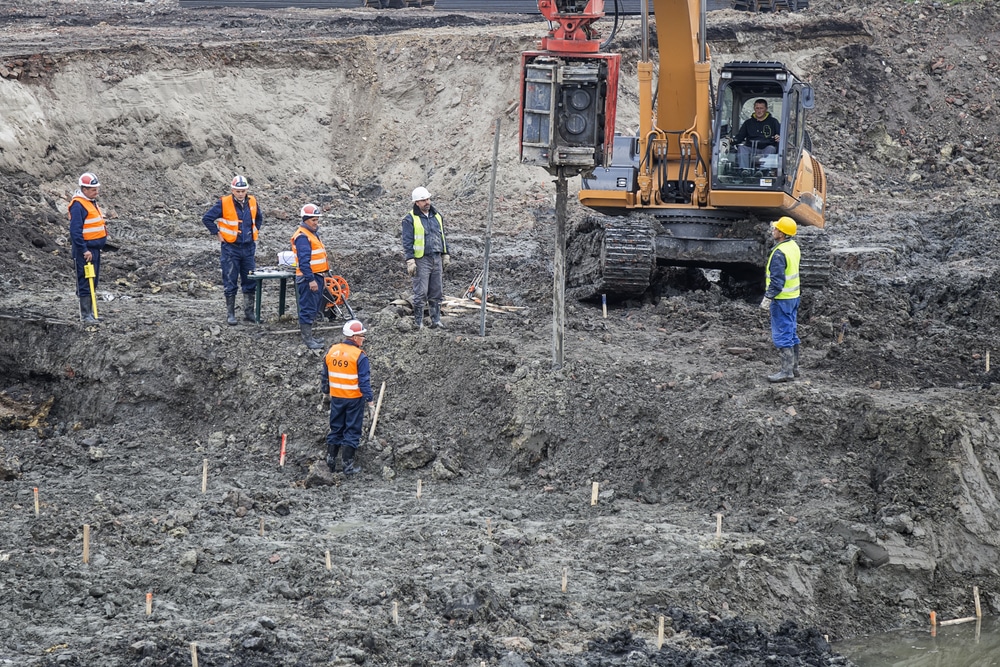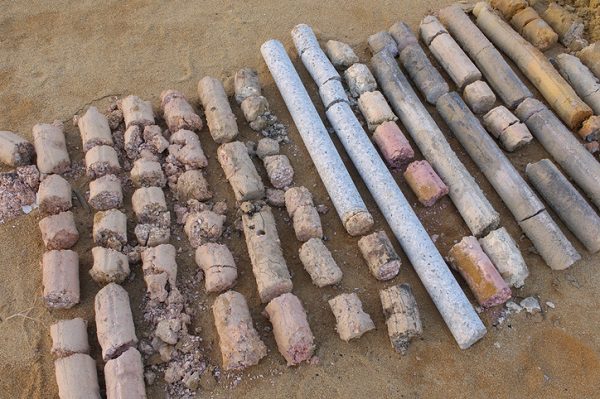A Comprehensive Overview: All About Geotechnical Engineering and Its Applications
A Comprehensive Overview: All About Geotechnical Engineering and Its Applications
Blog Article
The Relevance of Geotechnical Design in Addressing Ecological Obstacles and Enhancing Building And Construction Safety And Security
Geotechnical design works as a cornerstone in the intersection of environmental stewardship and building and construction safety and security, providing vital insights into the actions of soil and rock under different problems. This discipline not only addresses pressing ecological challenges such as soil disintegration and groundwater protection however likewise boosts the effectiveness of facilities against all-natural threats. By applying calculated site examinations and tailored reduction steps, geotechnical engineers play a crucial role in securing both human lives and environmental stability. Yet, the intricacies of these difficulties increase essential inquiries regarding the future instructions of this field and its implications for lasting advancement.

Duty of Geotechnical Design
Geotechnical design plays an essential function in the layout and construction of framework by resolving the behavior of soil and rock products under numerous conditions. This field of engineering is essential for comprehending the interaction in between frameworks and the ground, which includes establishing the load-bearing capacity of dirt, analyzing stability, and anticipating prospective settlement or failing.
Geotechnical designers are in charge of conducting website investigations, which involve sampling and testing dirt and rock to gather information on their chemical and physical buildings. This information is crucial for designing structures, preserving walls, and other earth-retaining frameworks that make certain safety and longevity. Geotechnical engineering educates the option of ideal construction approaches and materials, thereby decreasing threats associated with soil habits.
In addition, the integration of geotechnical design principles into metropolitan planning and ecological administration is critical for dealing with obstacles such as ground contamination and groundwater management. By recognizing geotechnical elements, designers can create lasting options that boost the durability of infrastructure against natural dangers, while additionally advertising environmental stewardship. Eventually, the duty of geotechnical engineering is crucial for attaining risk-free, sturdy, and eco aware construction practices.
Dirt Disintegration Reduction
Soil disintegration postures a significant risk to both environmental stability and infrastructure stability, impacting about 24 billion tons of abundant soil lost annually worldwide. This sensation is exacerbated by variables such as logging, urbanization, and poor farming methods. Geotechnical design plays an essential function in developing efficient dirt disintegration reduction methods that guard both the environment and construction tasks.
One method requires the implementation of erosion control methods such as greenery growing, which maintains dirt with root systems. In addition, the building and construction of retaining balconies and wall surfaces can successfully decrease surface area overflow and secure vulnerable areas from disintegration. Proper drainage design is additionally vital; it minimizes water accumulation and guides excess drainage far from important frameworks.
In addition, geotechnical designers utilize dirt stablizing methods, such as the application of geotextiles and naturally degradable mats, to improve soil communication and avoid deterioration - all about geotechnical engineering. Normal tracking and evaluation of erosion-prone sites make it possible for timely treatments, making sure long-term sustainability. By incorporating these techniques, geotechnical design not just mitigates the influences of soil erosion yet likewise adds to the durability of framework versus environmental difficulties, inevitably cultivating a safer and much more lasting constructed environment
Groundwater Defense Techniques
Groundwater offers as a crucial resource for drinking water, farming, and industrial procedures, making its defense crucial for environmental sustainability and click here for more public wellness. Reliable groundwater security strategies are vital in reducing contamination dangers and making certain the longevity of this source.

Regular monitoring of groundwater high quality is additionally important, enabling early detection of contamination sources and facilitating prompt remediation efforts. Using innovative modern technologies, such as geophysical studies and remote sensing, aids in recognizing possible hazards to groundwater gets.
Furthermore, public education and stakeholder engagement are vital, fostering area assistance for groundwater defense efforts. about geotechnical engineering. By integrating regulatory procedures, technological advancements, and neighborhood involvement, we can develop a thorough framework that safeguards groundwater sources while advertising lasting growth and building practices
Landslide Risk Monitoring
Landslides present substantial hazards to both human safety and security and framework, making effective risk monitoring approaches important. Geotechnical design plays an essential duty in identifying, analyzing, and mitigating landslide threats. A comprehensive understanding of slope stability, soil mechanics, and hydrology is vital for developing reliable threat monitoring plans.
The initial step in landslide danger administration includes extensive site investigations, that include geological mapping and dirt screening. These examinations help engineers assess the potential for landslides by determining important elements such as incline angles, dirt structure, and water web content. Utilizing sophisticated innovations such as remote sensing and geophysical surveys can improve the precision of these evaluations.
Once dangers are recognized, appropriate reduction procedures can be applied. These might include engineering solutions such as preserving wall surfaces, drainage systems, and incline stablizing methods. Additionally, checking systems need to be established to spot indications of ground activity and changes in water degrees, enabling for proactive interventions.

Enhancing Building Safety And Security
Building websites frequently offer a myriad of threats that can jeopardize employee security and project integrity. Geotechnical design plays an essential role in boosting building and construction safety and security by giving vital insights into subsurface problems. Via detailed soil and rock analysis, geotechnical designers can identify potential dangers, such as dirt instability, groundwater issues, and seismic like this vulnerabilities, which might jeopardize the safety and security of construction activities.
Implementing geotechnical services, such as proper structure style and using keeping frameworks, minimizes these threats substantially. These solutions not only guarantee the security of the structures being constructed however also develop a safer working atmosphere for building and construction employees. Additionally, extensive monitoring and assessment of website problems throughout the construction procedure are essential. Making use of innovative technologies like ground-penetrating radar and inclinometer systems enables real-time data collection, allowing for timely interventions when risks are found.
In addition, cultivating a culture of safety and security via training and adherence to established security procedures further enhances construction site safety and security. By integrating geotechnical knowledge right into the preparation and execution stages, building and construction projects can attain greater safety standards, eventually safeguarding workers and ensuring effective job conclusion.
Conclusion
In conclusion, geotechnical engineering serves as an essential self-control in promoting and taking on ecological challenges construction security. With effective soil disintegration reduction, groundwater defense techniques, and landslide risk monitoring, geotechnical designers contribute to the development of resilient facilities.
Geotechnical design offers as a keystone in the intersection of ecological stewardship and construction security, providing essential understandings into the actions of soil and rock under various problems. Geotechnical design educates the selection of appropriate building and construction approaches and materials, thus minimizing dangers linked with dirt habits.
Geotechnical design plays a critical function in establishing efficient dirt disintegration reduction strategies that secure both the setting and building and construction tasks.
Additionally, geotechnical designers employ soil stablizing methods, such as the application of geotextiles and eco-friendly mats, to improve dirt communication and avoid deterioration. Via detailed dirt and rock evaluation, geotechnical designers can determine potential dangers, such as dirt instability, groundwater concerns, and seismic susceptabilities, which may compromise the safety of building activities.
Report this page